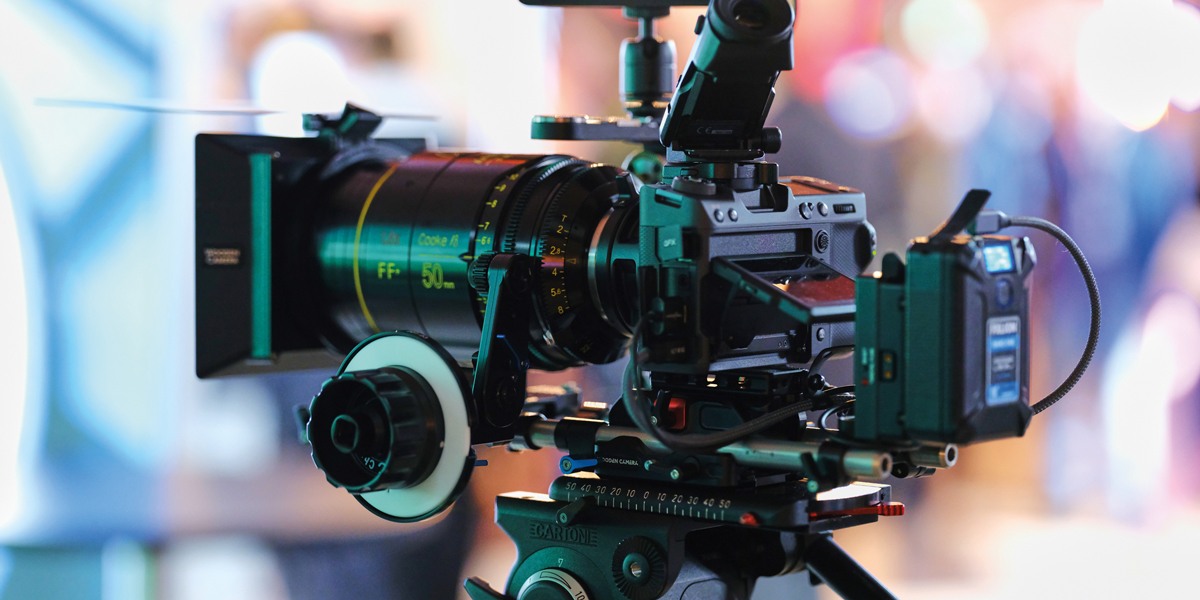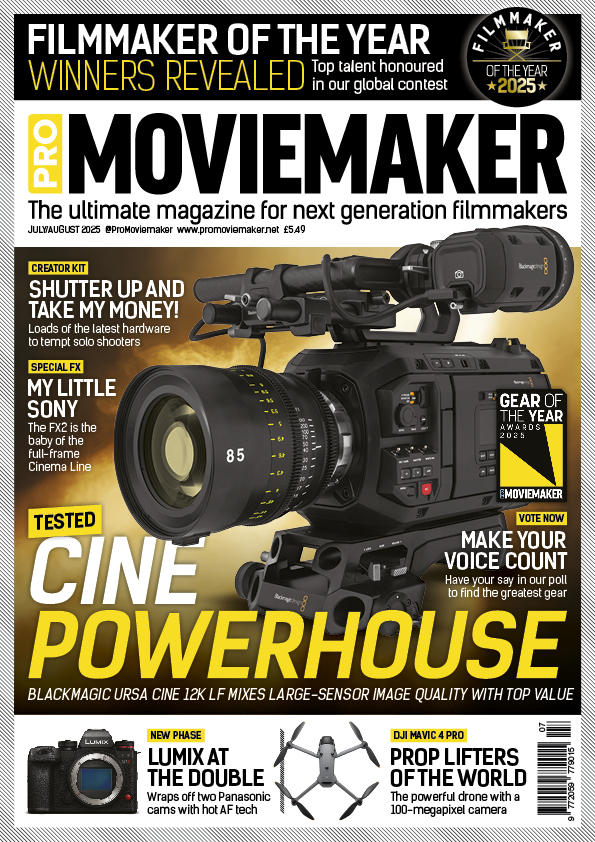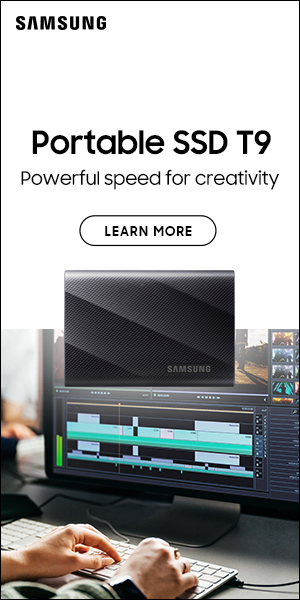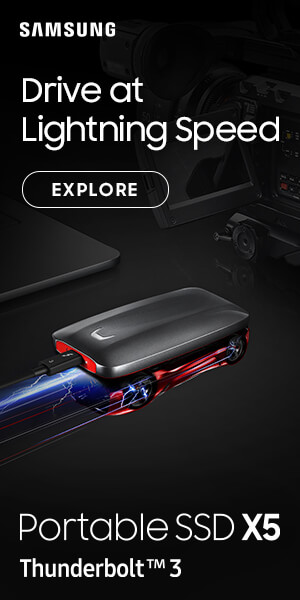
Full Marks for Fujifilm powerhouse
Posted on Mar 5, 2024 by Adam Duckworth
Cinematographer Jim Marks is bowled over by the stunning, unique footage created with the high-tech FUJIFILM GFX100 II
Advertisement feature
Good news travels fast, and that’s definitely been the case with the groundbreaking new FUJIFILM GFX100 II. It has quickly won over filmmakers who demand the very best image quality – and a look you can only get from a large-sensor camera.
It also boasts all the advantages of modern mirrorless technology, such as advanced autofocus and in-body image stabilisation. It is the first 100-megapixel camera ideal for high-end professional filmmakers and hybrid shooters.
With its relatively small form factor, it can be used on drones, sliders and gimbals or fully rigged up to produce that super-cinematic blockbuster look.
Accepting Fujifilm’s wide range of native GF glass or with PL-mount lenses via an adapter, the GFX100 II offers a choice of different aspect ratios, including 35mm and Fujifilm’s Premista size, as well as anamorphic with different de-squeeze monitoring options.
The newly developed, 102-megapixel CMOS sensor is 55mm across the diagonal, so it works with a huge variety of lenses.
Recording options include Raw output for the ultimate control in post, right through to low-bit-rate options for camera-to-cloud integration and a super-speedy workflow.
To squeeze every bit of quality from the camera, the GFX100 II enables 4K/60p in 4:2:2 10-bit to be captured internally on a CFexpress card or to an external SSD at almost full sensor width (43.63mm).
If you need higher resolution, there is also 8K/30p, and Full HD in 120p is also available for super slow-motion. The camera records internally in the three most popular Apple ProRes options: HQ, 422 and LT. It’s easy to see why it has been turning the world of cinematography on its head.
One of the first filmmakers to get to grips with the benefits of the GFX100 II is DOP Jim Marks, who has worked with lots of different high-end movie cameras – as well as using medium format digital stills cameras for many years.
He’s a total convert to the unique benefits of a larger sensor and raves about this Fujifilm beauty.
“The first thing for people to get their head around is that the sensor is 1.7x the size of full-frame.
That’s a really big canvas,” exclaims Marks. “It allows you to be much more immersive and to get a wider field of view. It also opens up an enormous choice of lenses. One of the best things is the four sensor crops inside the camera, including for native GF lenses which give the widest view.
“Then you jump into Premista, which is a tiny bit smaller and specifically for the FUJINON Premista lens range. The next is full-frame 35mm, then you drop to the 8K crop, which is that bit wider than Super 35.
“So you have these different widths to choose from. There’s 16:9 in DCI 4K – and then my favourite, which is just ridiculous: 5.8K super wide 2.35:1. And if you use a lens like the 19-45mm Premista, it’s so wide – like a western. It almost makes spherical lenses look anamorphic.”
It opens up a world of super-size sensors in a camera that is affordable compared to anything else on the market. “It’s second in sensor size only to the Arri Alexa 65, which is rental-only,” says Marks. “And if you put the Alexa 65 in 4K 16:9, the actual sensor coverage is incredibly similar to the GFX100 II. This new camera allows higher-end productions to have a small, nimble camera with this massive sensor and it’s relatively affordable. Not only that, it has all the tools that cinematographers require, whether it’s internal ProRes HQ, ACES, waveforms, vectorscopes – all things we really need.”
After all, it’s little use having an impressive sensor and great colours from high-bit-rate codecs if the camera isn’t functional.
But this latest Fujifilm truly delivers, as it’s packed with the modern technology you’d expect from a mirrorless. The GFX100 II boasts up to eight stops of image stabilisation, and an IS Boost option produces footage that can come close to the look from a tripod or gimbal.
This transforms the potential for handheld shooting. Since the body weighs just over 1kg with battery, card and detachable 9.44m-dot EVF on board, this is the ultimate lightweight cinema set-up.
“My favourite feature is the EVF, and how I can flick it up and turn it around,” explains Marks. “It allows you to rig the camera in so many different ways. You could have a small prime lens on and even shoot a documentary with a very immersive view.” This kind of perspective could come from no other camera, thanks to the combination of massive sensor and small form factor.
Although there are plenty of codec and colour options, such as F-Log2 for maximum dynamic range of more than 14 stops, the GFX100 II also has the brand’s famous Film Simulation modes built in. These offer a massive range of stunning looks right out of camera – without the need for excessive work in the grade.
“The new one is Reala Ace, which is a really nice, punchy, everyday kind of look,” states Marks. “But, importantly, you can go into menus and change it – knock the sharpening back, take the noise reduction down and tweak the saturation to get what you want.
“If I’m going to do some serious colour grading, then I absolutely shoot in F-Log2. But if I’m turning something around fast for web or social jobs, or there isn’t the budget for a colourist, Film Simulations are an option. Everyone loves Fujifilm colour, and what the Film Simulations do is provide a shortcut to looks based on the old film emulsions.”
One of Marks’ favourite ways to use the camera is to attach the GF55mm f/1.7 R WR because of the incredibly shallow depth-of-field it produces. “When I’ve got a sensor that big, it’s all about showing the character in the environment.” Keeping a subject sharp with such a fast lens would normally be a challenge, but the GFX100 II makes it easy thanks to advanced AI autofocus and eye tracking.
“The eye tracking is wonderful. You could just stick on the 55mm lens with a variable ND on the front, and shoot away,” Marks tells us, safe in the knowledge the subject will be in focus.
The improved tracking AF function keeps a wide range of subjects sharp, regardless of other objects in the frame. Simply select the subject in the frame via the 3.2in, three-way tilting touchscreen – and the camera stays locked on. “You can alter the speed and sensitivity of the focusing. If I was to compare it to previous cameras, it’s night and day ahead in terms of speed and accuracy.”
Featuring an Ethernet port and full integration with Frame.io Camera to Cloud, as well as a lens roadmap that includes the first tilt-shift optics for digital medium format, an ultra-telephoto prime and a standard powerzoom, the brand is gearing up for a bright future in filmmaking.
“Fujifilm is taking filmmakers incredibly seriously. You can really tell, as the GFX100 II has so many professional features – and some of these are unique to Fujifilm cameras,” says Marks. “What I’ve always liked is that Fujifilm leads in terms of design and features. But the proof is in what the picture looks like, and how easy the camera is to use. And on both of those fronts, the GFX100 II does great.
“I love the flexibility of using different glass on that big sensor. Whether it’s with anamorphic or spherical lenses, it opens up the world so cinematographers or content creators can really choose their look. And, ultimately, the GFX100 II is the camera that can do just that.”
Originally published in the March/April issue of Pro Moviemaker.










